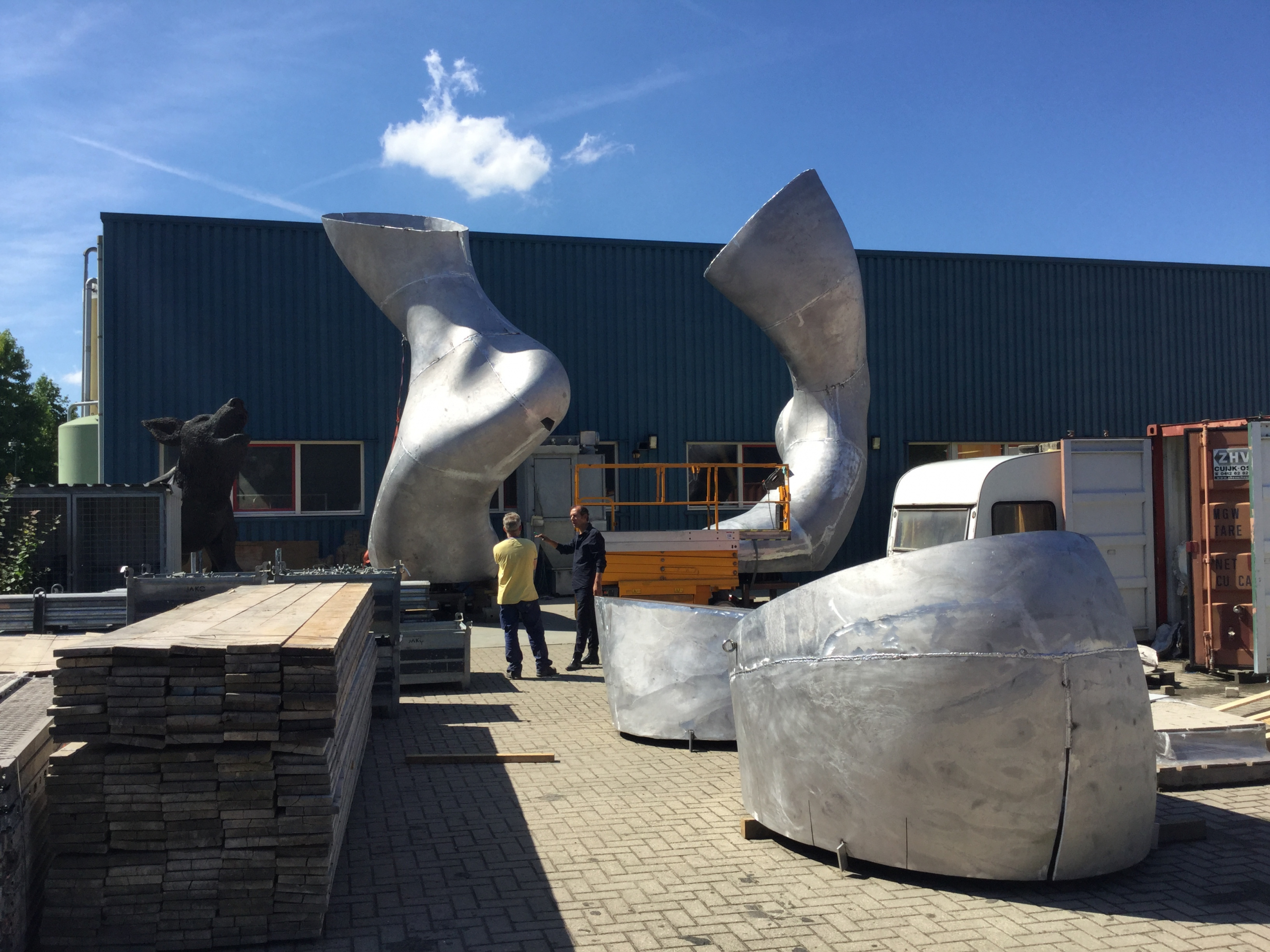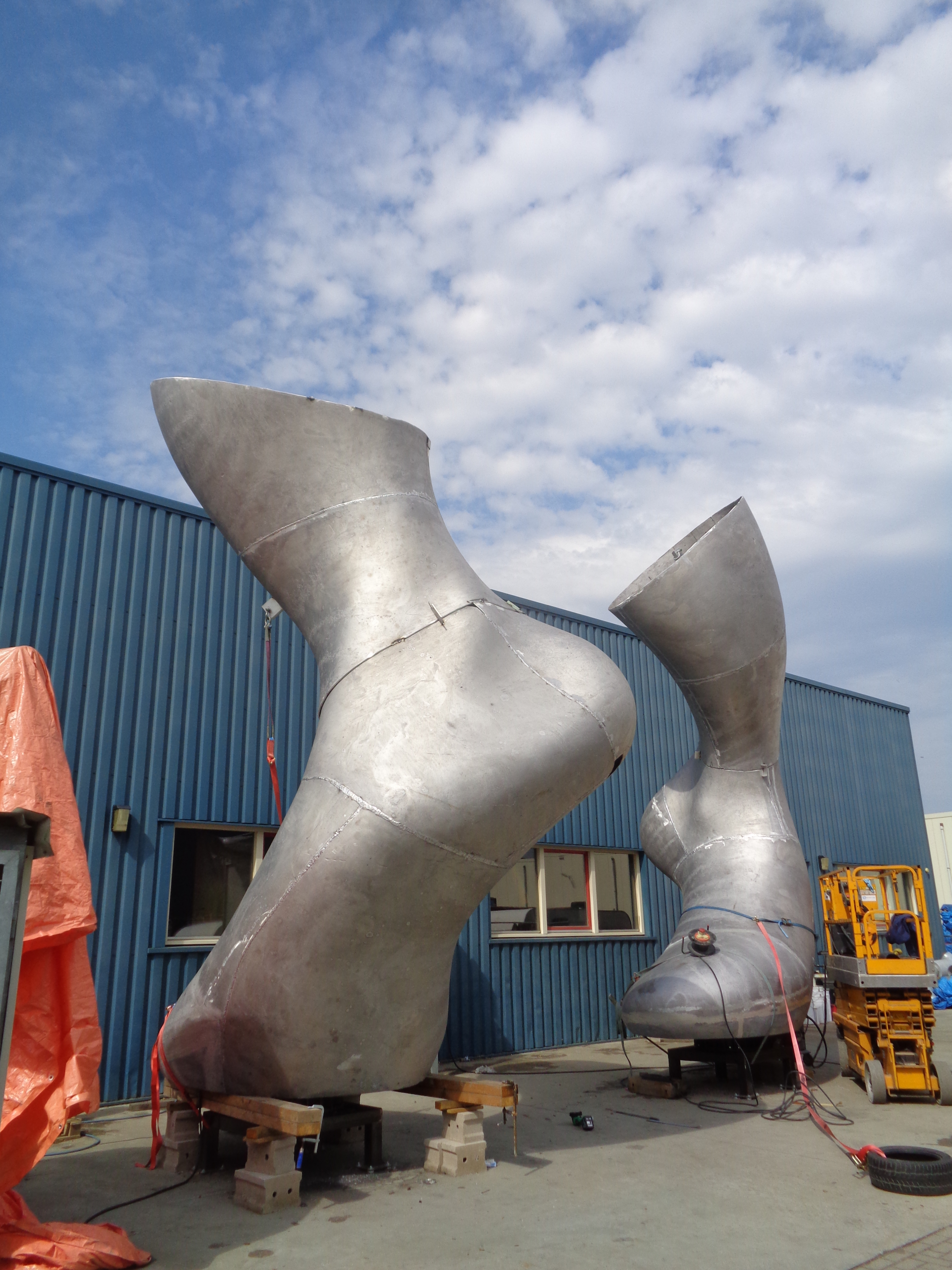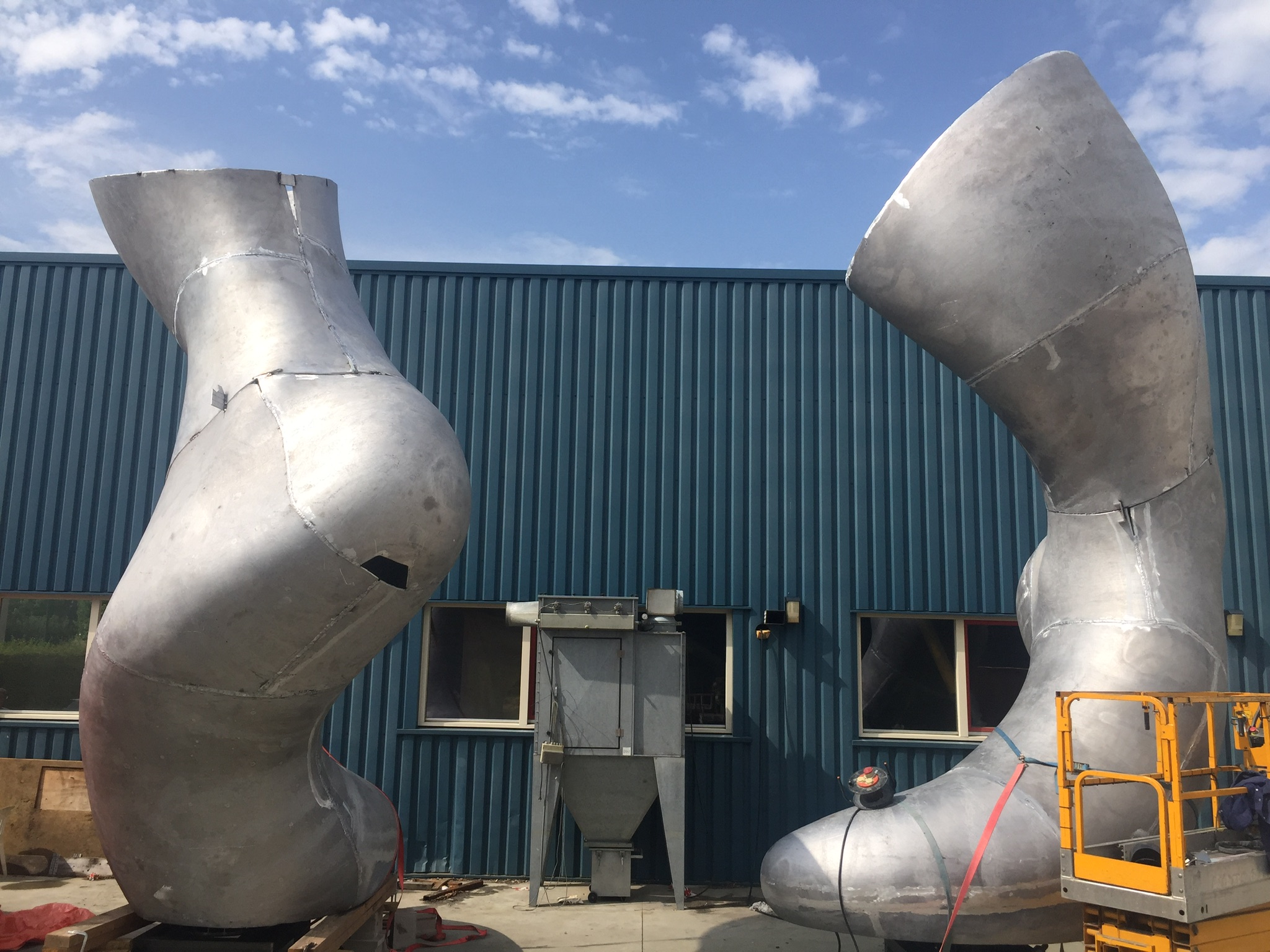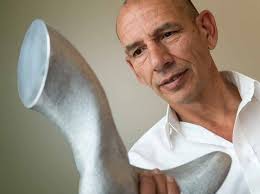Let’s Go
Jeroen Boomgaard
So there they stand. Two feet, created by Ben Zegers. They are very big, quite a presence here at one of the busiest locations in Rotterdam. They have been positioned just like the feet of The Little Dancer by Degas. That one is in the Boijmans Van Beuningen Museum. There it presents a somewhat challenging image, its downcast eyes defying the visitor’s gaze. But these feet are not just for looking at, for being admired from afar. They form part of the movements, activities and labours of the people there on the street. They participate; they are part of what we term the ‘public space’.
The two giant feet here on Binnenrotte don’t stand still; they carry on from where the Little Dancer stops. Not only have they left the museum, they have also started to dance. No idea what they are dancing: is it the tango, the rumba, or a new dance just picked up from TikTok? They take up the swing and show us what it is about: they show us that we have to stay in motion.
Artists have long been fascinated by motion, seeking ways to represent it. The creators of the cave paintings, for example, already suggested motion many thousands of years ago. In the flickering firelight, bison, deer and other animals appear as if in flight across the walls of the cave. Since the end of the nineteenth century we have been able to really record movement. Film was succeeded by television, video and all the digital media of today, displaying each motion and each element of movement in the greatest detail. The puzzle originally solved by the British photographer Eadweard Muybridge with a series of photographs no longer has any secrets for us. The fascination has become an obsession: every sporting event now largely consists of repeats and slow-motion displays of crucial moments and movements. The brilliant side-step, the failed dive of the goalkeeper, an athlete’s final paces just before the finishing line: we can see them in our sleep. Despite the surfeit of moving images, artists still strive to capture the essence of motion. Or, to put it better, they try to freeze the motion, the better to depict it.
That seems rather superfluous. We can speed up any image, slow it, freeze it, and then set it in motion again. The frozen images, however, remain part of an action; they belong with a process which started somewhere, and which can immediately be resumed. No matter how still they stand, they carry in them the purpose which once set them in motion. The dance of these feet is going nowhere; it has no meaning, and knows no goal. Their energy twists them around and puts them under tension, but they remain in place. They are not the image of a movement, but they embody the essence of motion. And we don’t get that essence served up on a plate while we contemplate in a museum; it stands before us, in the middle of our world, amid all the bustle and as part of the daily buzz and turmoil.
Everyone is dead but us: that is the statue’s title. That sounds odd, but I understand it in relation to the energy that is amassed in that sculpture. Art’s fascination with movement has always been an enduring fascination with life. Life as essence, but also life as everyday activity. While works of art may succeed in capturing that life and making it palpable, what we often forget – because we are so busily engaged in it – is that they frequently become alienated from that same life and lose their energy. Locked up in museums or stored away in homes, they become distant memories of a life removed in time and place. On the other hand, Ben Zegers’ two feet celebrate life, precisely where it foams and bubbles. At the same time, they are just statues. They are very big, and a permanent fixture. Other artists who work in public space prefer these days to avoid the inflexibility of statues and directly participate in daily life. Performances which draw energy from the interaction with people and the environment, and which entice observers towards new ideas by placing them in new perspectives. They avoid the neglect and obscurity which threaten permanent artworks in the public domain by involving themselves in the impermanence of events.
This statue will endure: it is a monument to here and now. With that, it distances itself from other monuments which try to eternally remind us of what once appeared to be. Statues of dead white men, who stare despondently at the past which placed them on their pedestals. Men who do not love all the forms of life playing out before them; they look down on them. These two feet do not stand on a pedestal. They are big, but they are not elevated; they touch the ground directly and celebrate the life flowing about them.
The two feet dance to the rhythm of time. Other voices resounded here once, and a different culture was dominant. But the feet listen to the sounds that can now be heard, the voices and atmospheres which now compete in their call for attention; the hidden beat of the here and now. And because they respond to the rhythm of daily life, they have no message. They are here now; they will remain for a while, but they may be gone in the future. They are not trying to prove anything or pronounce some new truth. They only show that there is movement. Always.



